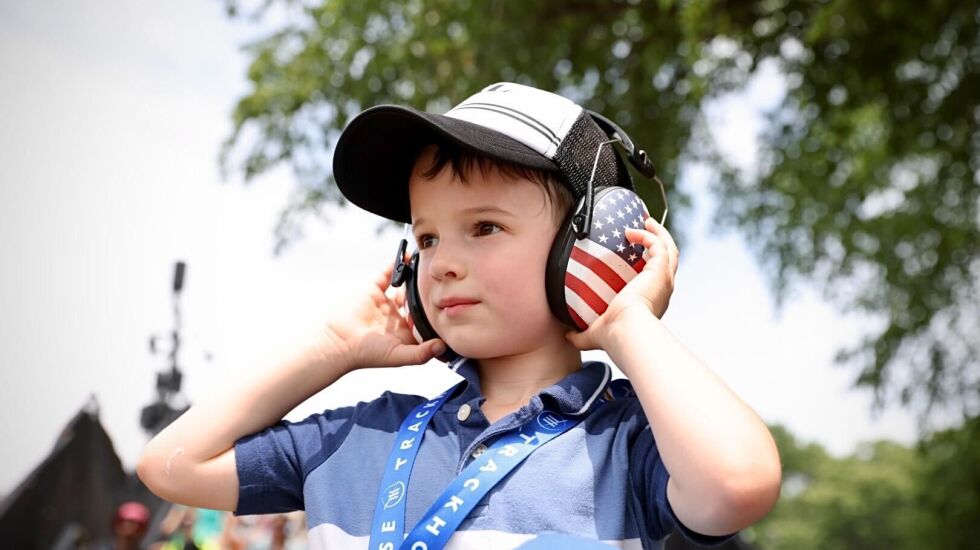
The need for speed should be accompanied by a healthy fear for the ear, experts say.
Sun-Times reporters confirmed as much during an unscientific survey of audio levels blasted out downtown Saturday by NASCAR’s inaugural spin around the Chicago Street Race course, where noise measurements in and around Grant Park routinely topped 100 decibels once the gentlemen started their engines.
Despite NASCAR deploying mufflers in an effort to cut engine noise by up to 10 decibels, the racket was more than enough to cause hearing damage within 15 minutes for people without quality earplugs or noise-reduction headphones, according to the U.S. Centers for Disease Control and Prevention.
Using a decibel-measuring cellphone app developed by the National Institute for Occupational Safety and Health, Sun-Times reporters picked up baseline noise levels of around 65 decibels along Michigan Avenue near the Art Institute of Chicago before the Xfinity Series race kicked off.
The volume cranked up to about 100 decibels during practice and qualifying runs, which only included a handful of stock cars at a time from the 38-car field.
That went down to about 80 decibels when the cars were farther away down the track, roughly the equivalent of the noise commuters hear when driving through city traffic, according to the CDC.
By the time the full lineup was unleashed for the official race, noise levels pushed as high as 114 decibels near the trackside at Balbo and DuSable Lake Shore drives. That’s worse than having a person shout directly into your ear — but not quite as bad as standing next to a blaring siren, by CDC estimates.
It was nearly as loud at the same time at Columbus and Jackson, where a reporter measured 110 decibels, and even outside the course at Michigan and Congress Plaza Drive, where engines blasted out 105 decibels.
All that still might not be as loud as the concerts scheduled this weekend along with the race. Professional PA systems typically pump out 120 decibels.
Your best bet? A well-fitting pair of earplugs or noise-reducing headphones — and noise-canceling headphones won’t do the trick.
“If it sounds too loud, it probably is,” said Mike Hefferly, director of Rush University Medical Center’s audiology clinic. “If you must shout to be heard by someone next to you, then it’s probably too loud.”







